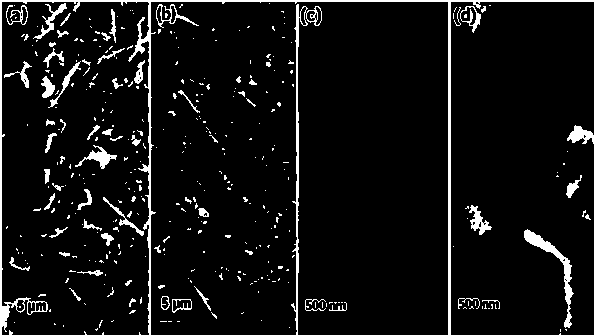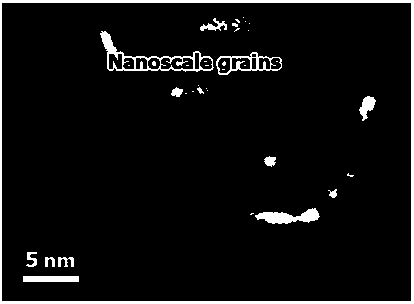Method for manufacturing quasicrystal-nanocrystalline modified gradient composite in laser additive mode
A laser additive and composite material technology, applied in the field of additive manufacturing, can solve the problems of poor wear resistance of titanium alloy surfaces, and achieve the effects of strong applicability, easy promotion and application, and strong wear resistance.
- Summary
- Abstract
- Description
- Claims
- Application Information
AI Technical Summary
Problems solved by technology
Method used
Image
Examples
example 1
[0025] Cut the TA15 titanium alloy into a cuboid with a length of 30 mm, a width of 10 mm, and a thickness of 10 mm. Before laser processing, clean the surface of titanium alloy, wipe it clean and blow dry. Set the mass score to 89%Stellite 12, 10%B 4 C. 1%Y 2 o 3 The mixed powder is laser alloyed on the 30 mm × 10 mm surface of the titanium alloy to form a lower layer; after that, the mass fraction is 84% Stellite 12, 10% B 4 C, 5%Cu and 1%Y 2 o 3 A mixture of powders is laser melt deposited on top of the lower layer to form the upper layer. The specific process steps are as follows:
[0026] (1) Before laser alloying, use No. 240 sandpaper to polish the surface of the cut TA15 titanium alloy to be laser-treated, so that the surface roughness reaches Ra 2.5 μm; then, rinse with water, and then use alcohol to melt the surface Wipe clean and blow dry;
[0027] (2) Weigh 89 g of Stellite 12 powder and B 4 C powder 10 g, Y 2 o 3 Put 1 g of powder into beaker No. 1; u...
PUM
 Login to View More
Login to View More Abstract
Description
Claims
Application Information
 Login to View More
Login to View More - Generate Ideas
- Intellectual Property
- Life Sciences
- Materials
- Tech Scout
- Unparalleled Data Quality
- Higher Quality Content
- 60% Fewer Hallucinations
Browse by: Latest US Patents, China's latest patents, Technical Efficacy Thesaurus, Application Domain, Technology Topic, Popular Technical Reports.
© 2025 PatSnap. All rights reserved.Legal|Privacy policy|Modern Slavery Act Transparency Statement|Sitemap|About US| Contact US: help@patsnap.com



